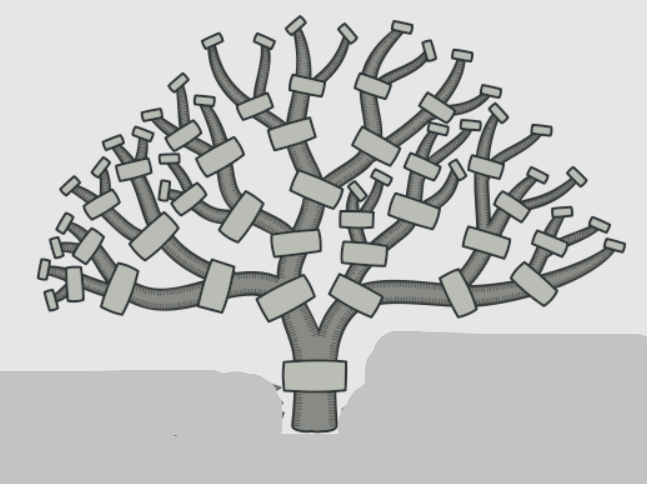Composite Pattern —— Structure Class
说实话,我也没想到这个模式能在哪里运用上,暂时只是Demo理解阶段。
What is Composite Pattern
Composite Pattern(组合模式)也叫叉数、对象树、Object Tree、...。它的思想很类似自然界的树状结构。

树状结构很有意思的地方在于,每个树枝都是一样的,甚至叶子和树枝都是一样的,区别只是在于树叶下面没有树叶了。
组合模式就是借鉴了这个思想,它允许将对象组合成树状结构,并以统一的方式处理对象及对象组合。组合模式使得客户端可以一致地对待单个对象和对象组合,无需区分它们的差异。
关键要素
- leaf and branch interface
- leaf
- branch
- Client
Example —— 读取文件夹和文件
假设我们要设计一个文件系统的结构,包括文件和文件夹。文件夹可以包含文件和其他文件夹,而文件没有子组件。我们可以使用组合模式来实现这个文件系统结构。
leaf and branch interface
public interface FileSystemComponent {
void showInfo();
}
leaf and folder
public class File implements FileSystemComponent {
private String name;
public File(String name) {
this.name = name;
}
public void showInfo() {
System.out.println("File: " + name);
}
}
public class Folder implements FileSystemComponent {
private String name;
private List<FileSystemComponent> components;
public Folder(String name) {
this.name = name;
this.components = new ArrayList<>();
}
public void addComponent(FileSystemComponent component) {
components.add(component);
}
public void removeComponent(FileSystemComponent component) {
components.remove(component);
}
public void showInfo() {
System.out.println("Folder: " + name);
for (FileSystemComponent component : components) {
component.showInfo();
}
}
}
Client
public class Client {
public static void main(String[] args) {
// 创建文件和文件夹
FileSystemComponent file1 = new File("file1.txt");
FileSystemComponent file2 = new File("file2.doc");
Folder folder1 = new Folder("Folder 1");
Folder folder2 = new Folder("Folder 2");
// 组合文件和文件夹
folder1.addComponent(file1);
folder1.addComponent(file2);
folder1.addComponent(folder2);
// 显示文件系统结构
folder1.showInfo();
}
}
out :
Folder: Folder 1
File: file1.txt
File: file2.doc
Folder: Folder 2
通过组合模式,我们可以将文件和文件夹组织成树状结构,使用统一的方式处理它们。
客户端可以递归地遍历文件系统的组件,无需关心是单个文件还是文件夹。这样,组合模式提供了一种灵活且可扩展的方式来处理对象的组合关系。
Example —— 统计城市人口数
这个案例不是那么恰当。令人费解!
interface
public interface Counter {
int count();
}
leaf
public class Leaf implements Counter {
private int sum = 0;
public Leaf(int sum) {
this.sum = sum;
}
@Override
public int count() {
return sum;
}
}
Branch
public class Branch implements Counter {
private List<Counter> counterList = new ArrayList<>();
public void add(Counter counter) {
counterList.add(counter);
}
public void delete(Counter counter) {
counterList.remove(counter);
}
public List<Counter> getChild() {
return counterList;
}
@Override
public int count() {
int sum = 0;
for (Counter counter : counterList) {
sum += counter.count();
}
return sum;
}
}
Client
public class Client {
public static void main(String[] args) {
System.out.println("开始统计人数");
Branch nation = new Branch();
nation.add(new Leaf(100)); // 模拟国家下 —— 直辖市1
nation.add(new Leaf(200)); // 模拟国家下 ——— 直辖市2
Branch region = new Branch();
region.add(new Leaf(300)); // 模拟国家下 —— 区1
region.add(new Leaf(400)); // 模拟国家下 —— 区2
nation.add(region); // 区加入国家
System.out.println(nation.count()); //1000
}
}